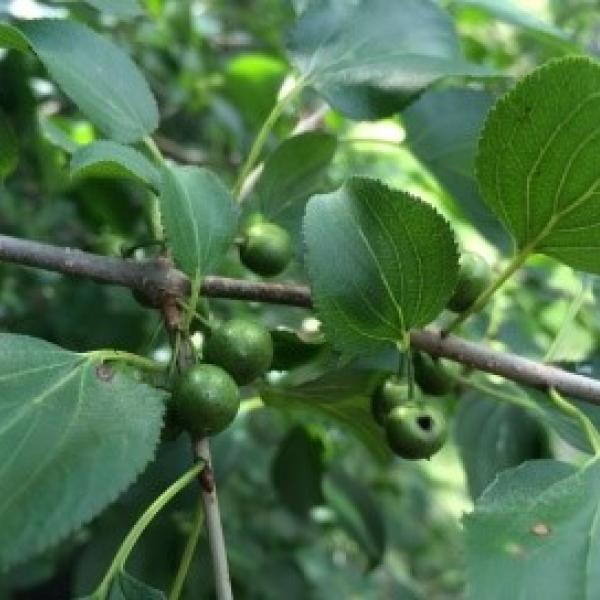
The colder temps and flurries of snow may make plant identification a thing of dreams for the coming summer. But one common invasive plant in Vermont can still be easily spotted throughout the winter months. Common buckthorn (Rhamnus cathartica), photo at right, is native to regions across Europe and Asia, and was brought to North America in the 1800’s, most likely for ornamental planting. Its popularity as an ornamental and in conservation plantings helped this plant spread across the United States and Canada, aided by its ease of propagation, hardiness, and tolerance of varied environment and soil conditions.
In the mid-20th century, it was noticed that common buckthorn served as an alternate host for oat crown rust. This curtailed plantings, but not before buckthorn had widely escaped cultivation. We now know that Common Buckthorn can form dense thickets in forested habitat, impeding native plant regeneration, and altering soil chemistry. Dispersed by wildlife, it can also lead to deleterious effects on the animals, as the plant (especially the berry) has a chemical that breaks down into a laxative called emodin. This documented behavior, and its continued spread in Vermont, are reasons this species is listed on Vermont’s Noxious Weed Quarantine.
There are actually two invasive buckthorn species in Vermont. The second is called Glossy Buckthorn (Frangula alnus). This plant can also invade wet or moist habitat, making it a threat to riverbanks and wetlands, as well as forests.
In the winter, look for the dark blue/purple berries that persist on the branches, and the darker grey brown bark that has prominent lenticels (gas exchanging pores, think the spots on a cherry tree!).
To learn more, check out Common Buckthorn and Glossy Buckthorn.
Additional resources:
NH Department of Agriculture, Markets and Food
Written by: Elizabeth Spinney, Invasive Plant Coordinator, Vermont Department of Forests, Parks & Recreation